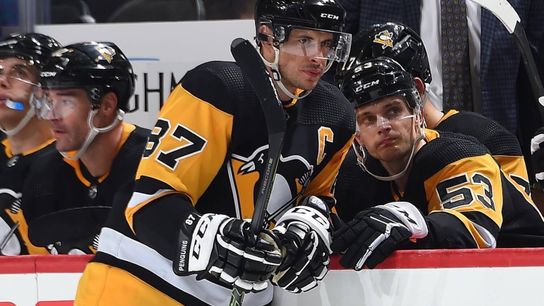It's a given that it will be a long time before sports, like so many other facets of society, operate the way they did just a few months ago.
Assuming they ever do.
Before standing-room crowds are shoehorned into stadiums and arenas once more.
Before fans exchange hugs and high-fives with strangers without worrying about whether the other person has a slight fever or occasional cough.
Before goalies are again the only people who wear a mask at work every day.
And hockey, which relies heavily on gate receipts, figures to be even more impacted by the coronavirus pandemic than it was by the widespread embrace of the neutral-zone trap a few decades ago.
While most details about any return by the NHL in the near future remain murky, it's a given that there will be no crowds if games are played this spring or summer. Heck, there's no guarantee that fans -- even a limited number of them -- will be allowed to attend during the 2020-21 season., regardless of when it would get underway.
The loss of income from tickets sales could have a profound, potentially devastating, impact on what's known as Hockey Related Revenue; essentially, that's money taken in by member clubs on which the NHL's salary-cap range for the following season is based.
The cap ceiling for 2019-20 is $81.5 million; if teams lose the money that would come from regular-season and/or playoff games being canceled or played in empty buildings, it obviously would affect the cap range for 2020-21.
Before the shutdown, league officials projected that the ceiling for next season would fall between $84 and $88.2 million.
It's difficult to imagine that such numbers still will be in play when the cap range for 2020-21 is established, and teams whose payrolls routinely flirt with the upper range -- the Penguins are one of them -- could end up being forced to gut their rosters to comply with a ceiling that is dramatically lower than anyone could have imagined just a few months ago.
The idea of giving teams the ability to use a compliance buyout or two -- basically, letting them buy out a contract without having the money used to do it count against the cap -- has been floated, and seems to have support among front-office types, if only for the flexibility it would provide.
But regardless of whether teams are allowed to do that, the NHL could take another step to ease the punishment high-spending teams might be forced to absorb if the cap ceiling plummets: It could give teams the option to adjust the salary-cap hit -- though not the actual salary -- for all contracts that were in place when the league was shut down to mirror the drop (by percentage) in the cap ceiling in future seasons.
For purposes this exercise, let's say that the cap ceiling drops by 10 percent in 2020-21.
Under this proposal, Sidney Crosby, for example, would get all of the money called for in the 12-year, $104.4 million deal that runs through 2024-25, but his normal salary-cap hit would be reduced by $870,000.
Teams that struggle to get to the cap floor, set at $60.2 million for the current season, would not be compelled to reduce the cap hit of any of their contracts, but the ones that would be hamstrung -- if not hogtied -- by significant shrinkage of the cap range would be able to mitigate the impact of that drop.
This plan would cover only contracts that already are in effect. If Jim Rutherford decides to give, say, Sam Lafferty a $10 million salary after Lafferty becomes a restricted free agent this summer, that entire figure would count against the cap. (Assuming, of course, that Lafferty would be willing to accept a modest $9,075,000 bump in his annual compensation.)
Linking cap hits to the drop in the top end of the range is not a total solution to the financial issues that will confront the NHL, regardless of when it resumes operations.
It does not, for example, account for any projected increases in the cap ceiling that general managers might reasonably have projected when making long-term commitments to players they wanted to get under contract for an extended period.
In a lot of cases, like that of Crosby, doing so was a sound business move.
But because of the coronavirus, the business of hockey is going to undergo some radical changes in a very short period of time.
Linking salary-cap hits to any plunge in the cap ceiling is a way to begin dealing with one of them.

Sidney Crosby and Teddy Blueger, March 3, PPG Paints Arena. - GETTY
Penguins
Analysis: How to handle a plunge in NHL cap
Loading...
Loading...
THE ASYLUM

Want to participate in our comments?
Want an ad-free experience?
Become a member, and enjoy premium benefits! Make your voice heard on the Steelers, Penguins and Pirates, and hear right back from tens of thousands of fellow Pittsburgh sports fans worldwide! Plus, access all our premium content, including Dejan Kovacevic columns, Friday Insider, daily Live Qs with the staff, more! And yeah, that's right, no ads at all!
We’d love to have you!